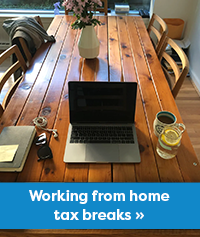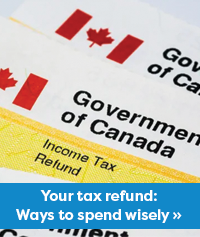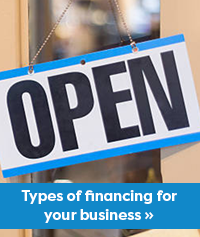Filing Your Taxes as a Small Business Owner

As a small business owner, running your organization comes with many responsibilities and rewards. Part of that list of yearly to-dos includes filing your taxes. But not to worry, as taxing as this may seem to some (especially new small business owners), the process can be much more seamless and rewarding than you may think, just by keeping these few key items in mind:
Beginning in 2018, the Canada Revenue Agency (CRA) also introduced a new, useful app called CRA BizApp, geared for small and medium-sized businesses. The app lets business owners create custom reminders and alerts for key CRA dates related to installment payments, returns and remittances. It is available and free of charge for Apple iOS, Google Android and Blackberry platforms. For more information on how to do your taxes, CRA’s digital services, or how to receive credits or benefits, please visit https://www.canada.ca/en/revenue-agency/campaigns/taxes-get-ready.html.
Revised Jul. 4, 2021
Be consistent with your record-keeping.
Whether you’re a free-lance contractor working a few hours a month, you're running a small mom and pop shop open year-round, or anything in between, maintaining your financial records throughout the year is essential. Keep track of all money coming in to and going out of your business by holding onto all receipts every time you make a sale, or whenever you buy something for your business. To make things even simpler for you, consider downloading any of today’s free bookkeeping apps, such as QuickBooks Accounting, available in the App Store for iOS devices, or Wave, a slick, cloud-based online accounting service.Fill out the right forms.
When it comes time to file your taxes, you’ll be filling out the ‘self-employment’ section of your tax return for your small business. It will be made up of three parts:- Identification: The who and what of your business, including your business name and address, the industry code of your business (which is used by Stats Canada to keep track of how many businesses are in any particular field), information on partners and co-owners, and finally, the fiscal period for your business.
- Income: Which is exactly what as it sounds – the money you’ve earned by selling the goods and/or services of your small business. Depending upon the type of business you own, (such a carpentry, catering, or free-lance writing, for example), other details, such as discounts, GST/HST amounts, or subcontractor’s payments may also be included in this section.
- Expenses: As we all know, it takes money to make money. Along with the typical cash you’ve spent to keep your business running, such as office supplies, marketing costs, and travel expenses, there may also be costs you hadn’t thought of which should be included in this section. (Did you know that home-based businesses can receive tax deductions on things like automotive expenses, insurance, mortgage interest, property taxes, and utilities like heat, lights and water?)
Pay attention to this year's deadlines.
To find out the deadlines for individual tax filing, self-employed business tax filing, the quarterly deadlines and more, visit the the Government of Canada website.We're here to help.
As a full-service banking institution, CUA offers tax services to all our members. If you’re unsure about anything involving the filing of this year’s taxes, our tax representatives at Harding & Associates Accounting Inc. offer efficient, insightful tax services that will leave you with confidence knowing your return is accurate and submitted on-time. For more information on CUA’s tax services call 902.492.6500.Beginning in 2018, the Canada Revenue Agency (CRA) also introduced a new, useful app called CRA BizApp, geared for small and medium-sized businesses. The app lets business owners create custom reminders and alerts for key CRA dates related to installment payments, returns and remittances. It is available and free of charge for Apple iOS, Google Android and Blackberry platforms. For more information on how to do your taxes, CRA’s digital services, or how to receive credits or benefits, please visit https://www.canada.ca/en/revenue-agency/campaigns/taxes-get-ready.html.
Revised Jul. 4, 2021






